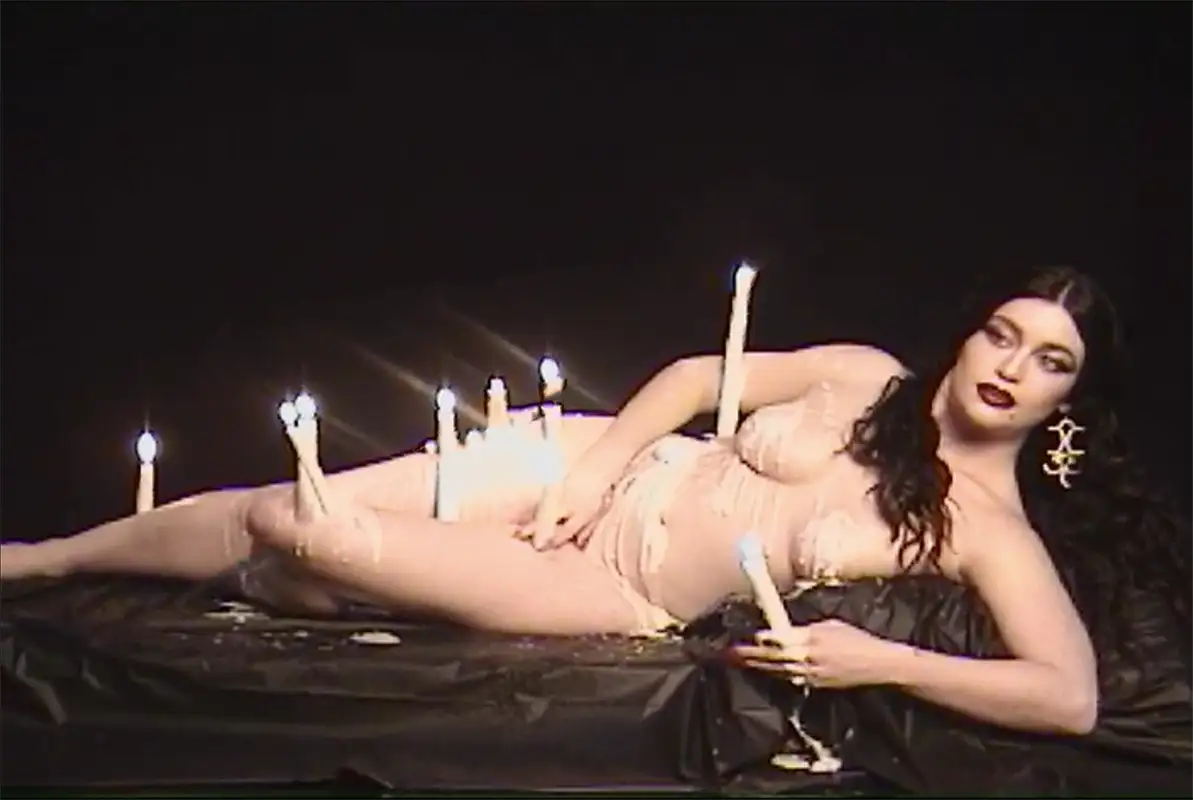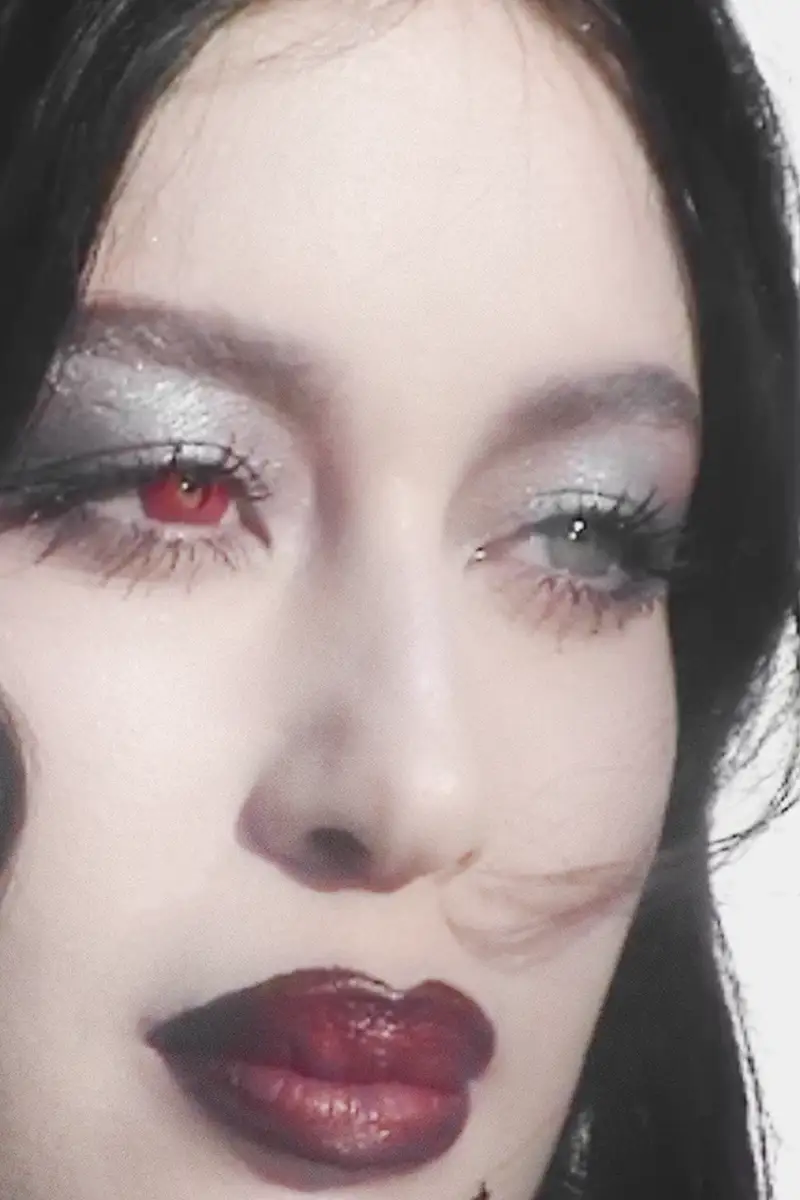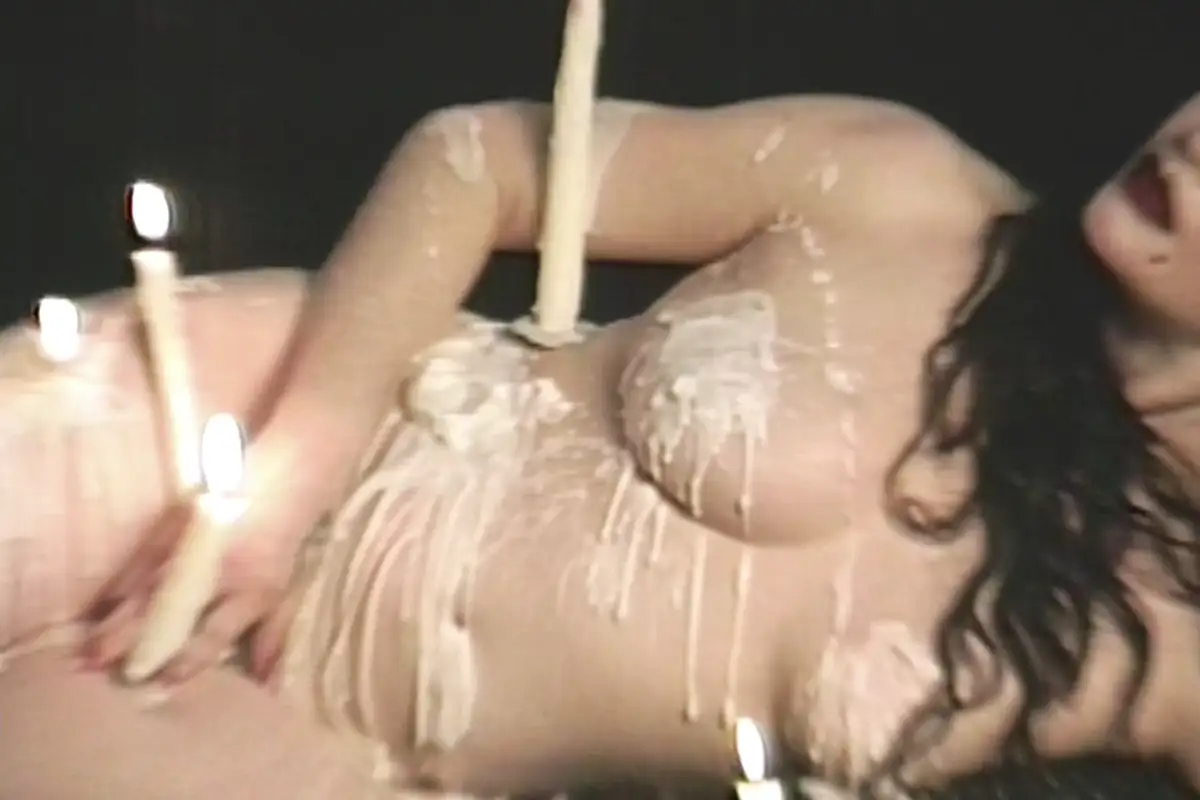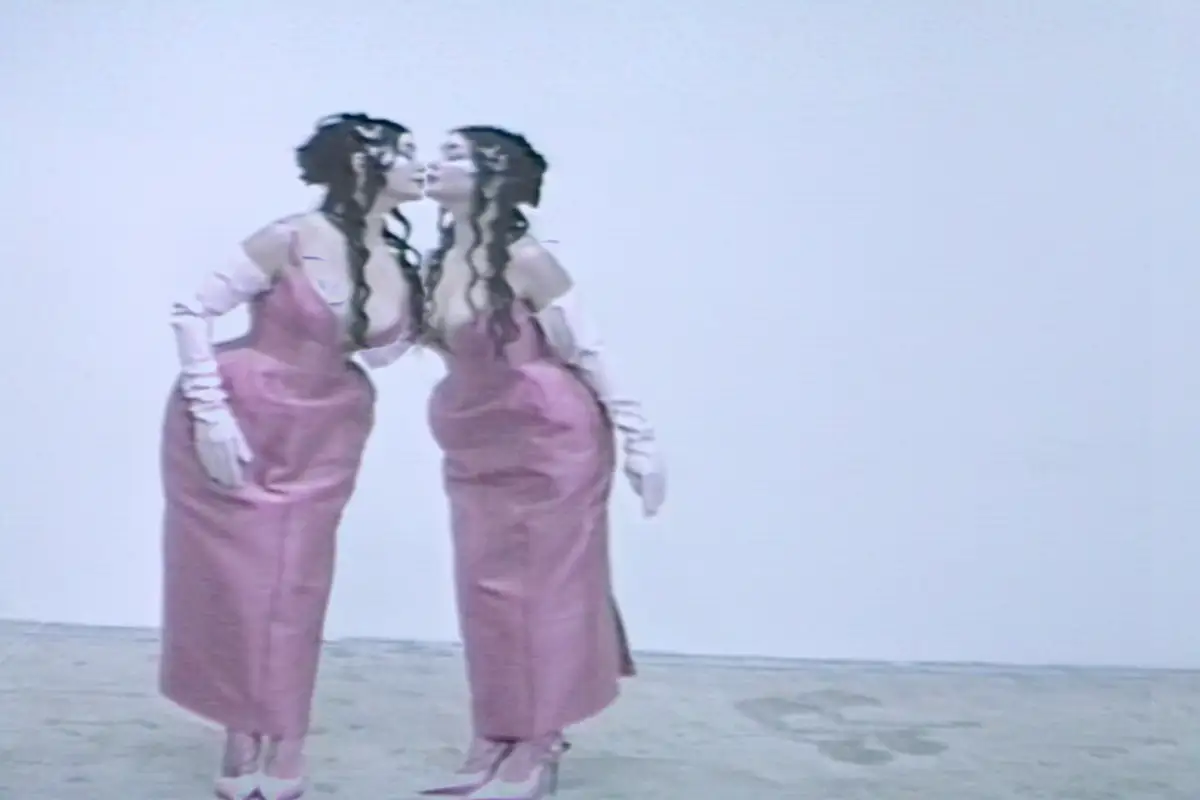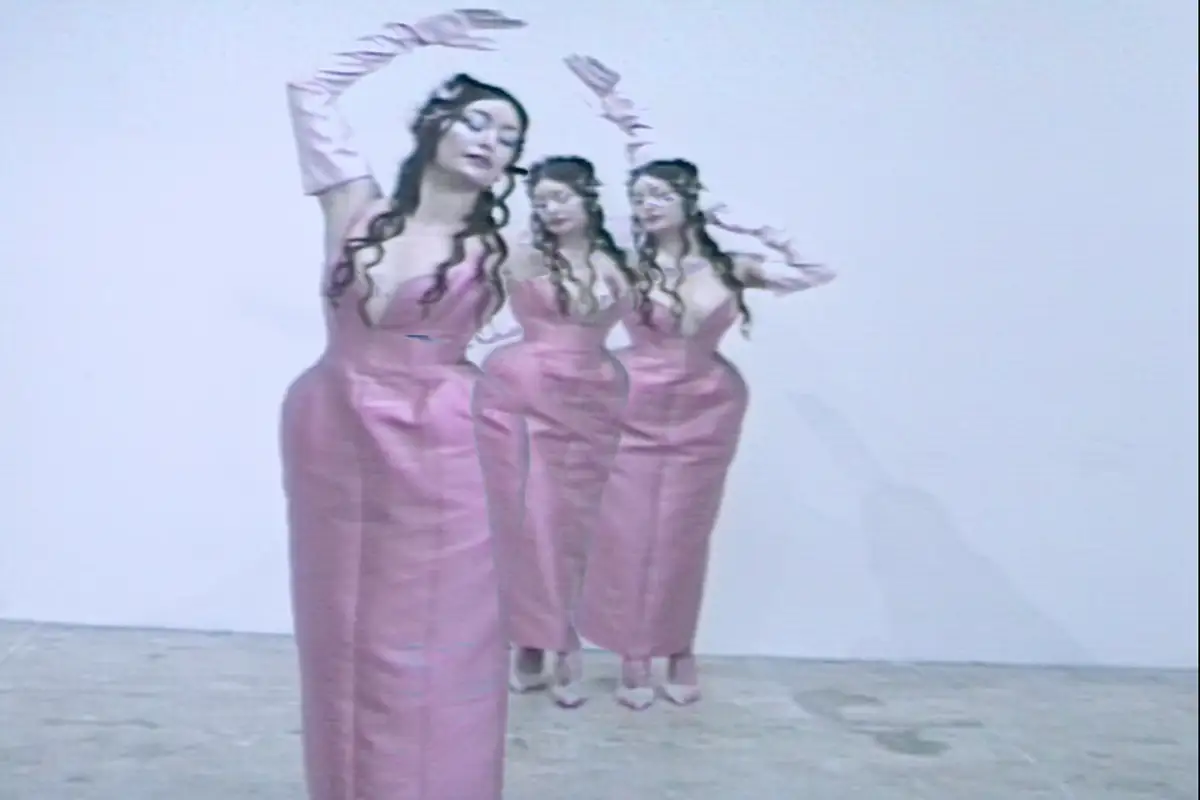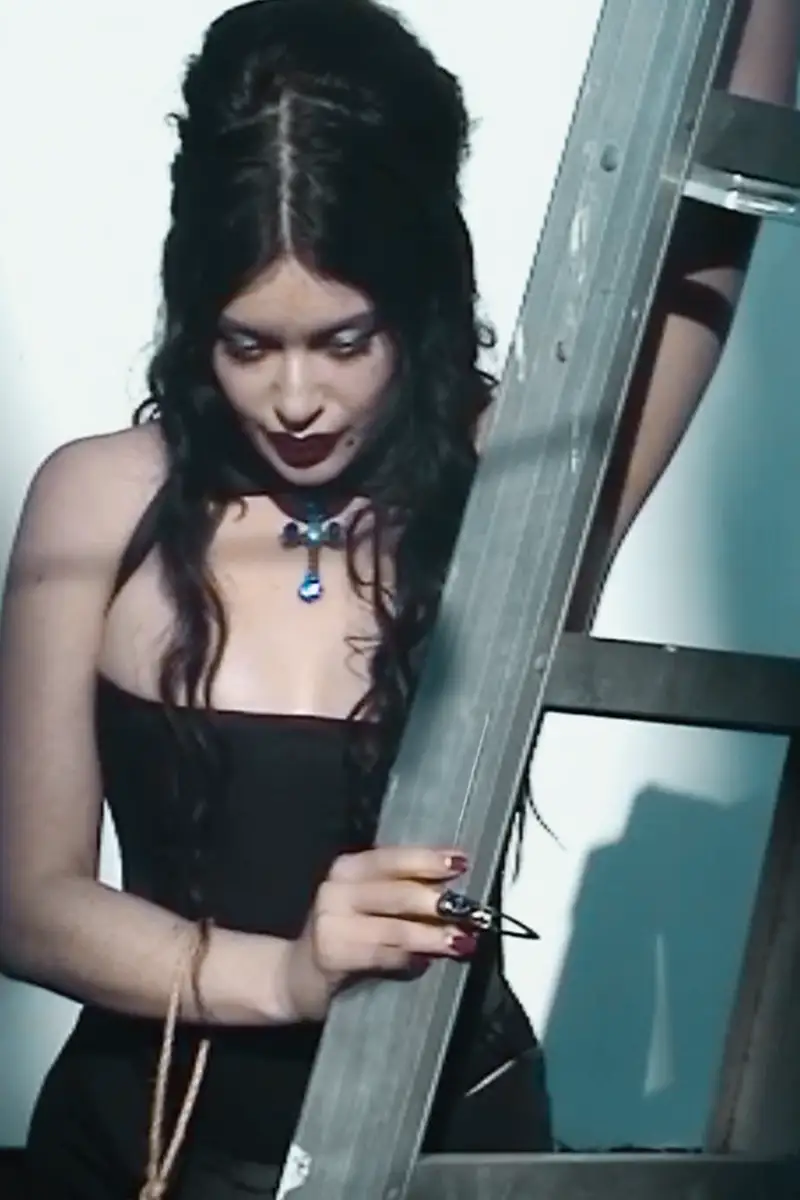Is the water coming out or going in? This is the mystery of movement that allows paintings to remain alive. Ariana Papademetropoulos on Earth, fantasy and surrealism with Lampoon for it SS24 issue
Ariana Papademetropoulos: the bubble serves as a metaphor for a form of protection
While other kids had board games, I had an Ouija board and talked with spirits. I’ve always had a pull towards occult sciences. My belief in other realms has been ingrained in me since childhood, shaping part of my identity. Growing up in Los Angeles only intensified this fascination, as the city embraces various forms of new age practices, unlike many other places. My cultural background adds another layer to this attraction. As a half-Argentinian I’ve always had differing perspectives on spirituality. While Argentinian culture leans towards religious practices, they also consult psychics a lot. I myself have a psychic named Wendy. She foresees the paintings I’m yet to create.
The reason why I started using bubbles in my paintings is inspired by a hypnotist I saw for over ten years who would always begin the session with me visualizing myself traveling inside a bubble. I feel this symbol entered my paintings from the hypnosis. The bubble serves as a metaphor for a form of protection, but it is also an allegory about death and the brevity of life. It is a symbol that transcends cultural boundaries. The seashell and the flower are also symbols that we can all relate to. Some elements may stem from an individual experience, but I aim to tap into symbols and imagery that deal with the collective unconscious and resonate universally.
The creation of liminal spaces
My work relates more to hyperrealism, another parallel dimension that coexists alongside our own. It’s a dream-like world, where the boundaries of reality blur. Believing in astral traveling and alternate dimensions aligns with concepts found in quantum physics, [suggesting that these dimensions are not distant or separate but merely a slight shift away from our current perception]. It is just one step to the left, one step to the right. It is another layer that we enter.
Central to my work is the creation of liminal spaces, particularly in the most recent series through the use of transparency. My paintings hold a tension – and remain alive. Viewers are left questioning the movement within the imagery, whether elements are disappearing or reappearing: is the water coming out or going in? These questions, and this mystery of movement, ensure that paintings hold an amount of energy and are perpetually evolving. In that way, my work relates to those in between where transitions occur.
Artificial intelligence and its potential impact on creative industries
In a society where so much is digitized and automated, there’s a unique appeal for art forms that require genuine skill and craftsmanship. It underscores our innate desire for authentic human energy. That makes me hopeful – I had concerns about the rise of artificial intelligence and its potential impact on creative industries, but the essence of what makes us human, our capacity for genuine connection and expression, will always prevail. Art possesses a distinct energy that cannot be replicated by machines.
Painting is not just an act of creation but also a form of transformation. It involves taking abstract thoughts and emotions from imagination and bringing them to life in tangible form. Paintings as a piece of the artist’s essence. Each one holds the energy of the artist who made it. When someone acquires the smallest draft from Picasso, it’s not so much that they want the drawing, they want a bit of his magic. They are acquiring a sort of relic of their creative spirit. You can always tell when art is made by the artist or his assistant. You can feel it. It is like a window into the artist’s mind.
We can go live on Mars – Ariana Papademetropoulos’s utopia
When I think of utopia, my mind naturally drifts to its antithesis, dystopia. History teaches us that attempts of ideal societies often ended in disappointment. I feel there is an inherent failure that comes with the word. Today, in Saudi Arabia they are building this form of utopia known as the Line – a linear smart city designed to have no emissions. When you see the project, you can’t help but feel as if you are stepping into the future. We are already living in the future, especially considering the advancements in AI and technology progress’s rate.
These created environments of these utopian worlds are to me more reminiscent of science fiction’s scene than what I would consider as a utopia. Utopia would be a world in which we wouldn’t need to build these structures so that we can go live on Mars. If we could coexist with nature in the way the American architect Frank Lloyd Wright envisioned it with his organic designs that would be a real utopia. The ideal world would be one where humanity embraces principles of harmony and symbiosis with the natural environment. We have always thought of humans building squares set against the fluidity of nature, but if we could alter our way of living so that we cohabitate peacefully with nature and without causing harm to our planet, that, to me, would be a utopia.
Humans need nature – Ariana Papademetropoulos’ surrealism
Humans need nature. Studies have shown that after just three days spent in the forest, depressed people experienced positive mental changes. That’s probably why we often find ourselves escaping the city for the countryside – it’s almost instinctual. We are animals and need to go outside, just like our cats and dogs. I believe that being in nature grounds us and helps us gain perspective on what truly matters. It’s all about finding a place to live surrounded by nature, a spot where I can have a home, a studio to work in, a beautiful garden to tend to… and maybe even a grotto thrown into the mix [laughs].
The current state of the world is uncertain. What climate change generates is surreal. The recent tornado in California – I’ve never seen something like that before. I strive to find beauty in this uncertainty, transforming the unknown into something captivating. We are entering uncharted territory, as it was thousands of years ago when humans didn’t have science to explain the stars or our own existence and would rely on mythology to comprehend the universe. We are rediscovering our capacity for creativity and embracing surrealism. Despite the darkness, there is a glimmer of wonder amidst the uncertainty.
Beauty and darkness to prompt meaningful change
While some art confronts the darkness and the heaviness of our environmental challenges, other art — that I put my category into— is more about beauty and the magic of our existence. For me, emphasizing that is essential for motivation. And even though reversing climate change may seem daunting, my art aims to be mystified by the unknown and find beauty amidst chaos.
Through my work, nature taking over is not portrayed as something to fear, but as inherently captivating and mysterious, which is maybe a defense mechanism to the fear that comes with environmental issues. I believe that we need both beauty and darkness to prompt meaningful change. Otherwise the idea of making a difference just feels hopeless.
The Earth will live on – Ariana Papademetropoulos
The Earth will live on. It is humans that won’t be here. We have seen glimpses of this resilience, during events like the Covid-19 pandemic. In Los Angeles, they were dolphins swimming back in Venice beach and bioluminescent plankton causing the waves to glow in the dark with each crash.The earth was coming alive again, and it took such little time. It is unsettling to think about the loss of species, including our own, but there is a strange comfort in knowing that even if humans disappear, the Earth will carry on. Some of my work, especially the flower series which is animating nature serves as a reminder that nature itself possesses a soul, and everything within it is alive.
My creative process is intuitive: I don’t approach it with a specific concept in mind. I allow the work to flow through me, understanding its meaning later on. My most recent painting, titled The Tales of Doctor Emoto, pays homage to Masaru Emoto, a Japanese scientist who conducted studies on water in the early 2000s. His research demonstrated how words spoken with intention can influence the molecular structure of water. According to him, if you tell water «I love you» or if you say, «I hate you» its aspects under a microscope changes.
Ariana Papademetropoulos: The Tales of Doctor Emoto
Just as flowers communicate with bees, letting them know when they’ve been pollinated and as trees exchange information between each other, there is life happening in nature that often eludes our perception. I aim with my work to delve into this unseen world and then maybe forge a connection with it. For The Tales of Doctor Emoto I painted many tear droplets, each tear representing a different emotion, whether it be tears of joy, sorrow, or laughter. Tears, when studied closely, reveal characteristics based on the emotions they accompany.
Science offers insights into the natural world, but I don’t believe it should strip away its mystique. It rather enhances our appreciation of the world’s beauty and challenges us to perceive it in new ways beyond our immediate senses. Sometimes we are too reliant on our sight, but we have three cones in our eyes whereas certain ocean shrimps have around a hundred, and must see crazy rainbow colors.
Ariana Papademetropoulos
Born in Los Angeles, artist Ariana Papademetropoulos, brings forth her blend of Greek and Argentinian heritage, showcasing in her work a fascination with occultism. Represented by American art dealer Vito Schnabel, Papademetropoulos aims for her phantasmagorical large-scale paintings to be mystified by the unknown while opening portals to other worlds.
Anna Prudhomme


